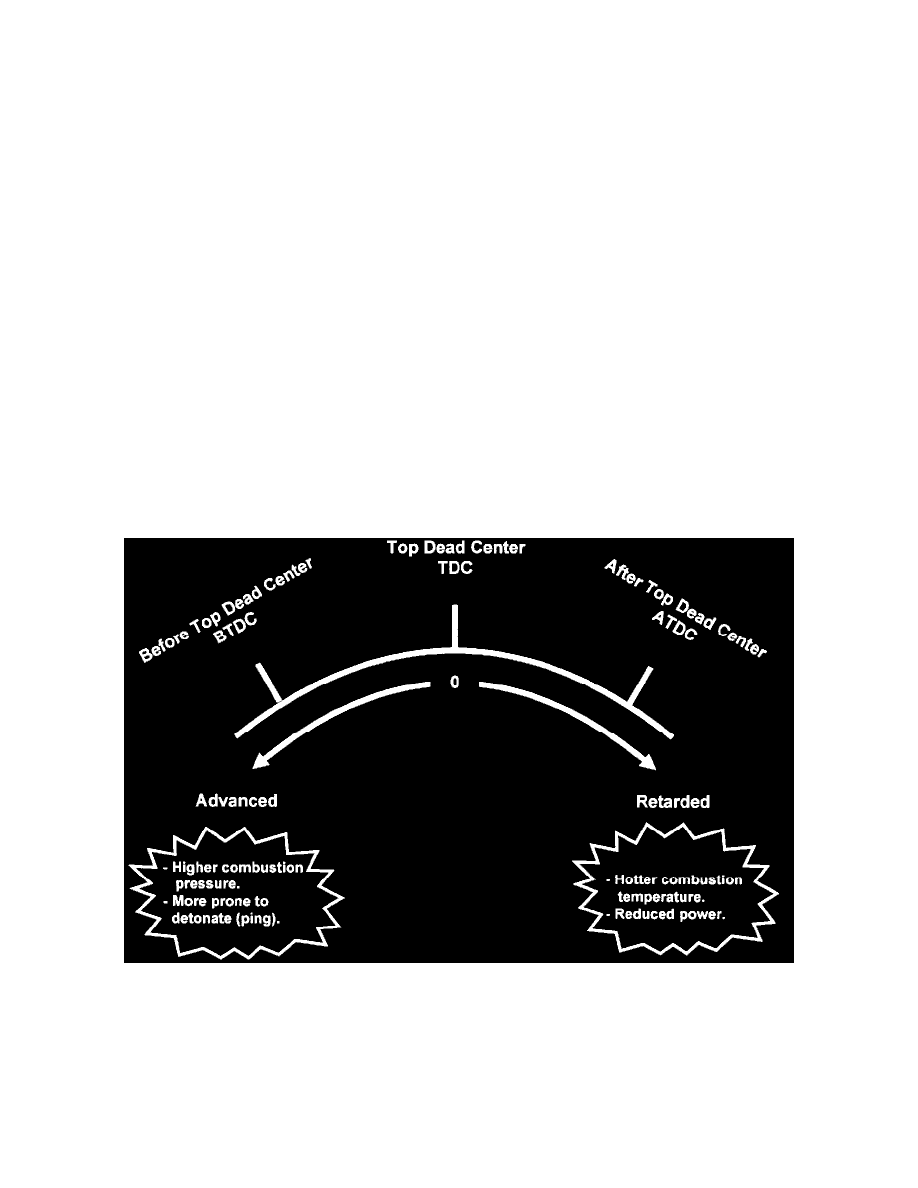944 S L4-2479cc 2.5L DOHC (1987)

Timing Belt: Service and Repair
Initial Checks
INITIAL CHECKS (PRIOR TO REMOVAL)
PURPOSE
Checking and recording the ignition timing and manifold vacuum level before and after the timing belt replacement allows for two assurances:
-
Initial conditions are correct.
-
Verifies the quality of the job after the belt has been installed.
CHECK TIMING: See: Tune-up and Engine Performance Checks/Ignition Timing
WHY
Ignition Timing
Ignition timing is the position of the piston on its compression stroke when the ignition coil fires the associated sparkplug.
Ignition timing is affected by two sources.
-
Physical rotation of the distributor.
-
Alignment of the camshaft and crankshaft via the timing belt.
Prior to replacing the timing belt it is very important to verify that this relationship is correct. If the timing belt is installed correctly the
after-repairs timing check should be within 2 degrees of the pre-repairs timing check.
NOTE: Minor differences, +/- 2 degrees may result from original belt stretching as it aged.
If the timing belt is initially installed incorrectly, the pre-repairs ignition timing may not be correct, and the after-repairs timing will differ
greatly from the initial.
Checking the timing before and after the job will help prevent confusion and verify the job was done correctly.
Notes on Timing:
-
An ignition timing of 0 degrees BTDC (Before Top Dead Center) implies that the ignition coil fires the spark exactly as the piston reaches
its highest position (top dead center).
-
An ignition timing of 10 degrees BTDC implies that the spark is triggered 10 degrees of crankshaft rotation Before to the piston reaching
top dead center.
-
An ignition timing of 10 degrees ATDC implies that the spark is triggered 10 degrees of crank shaft rotation After the piston reaches top
dead center.
Manifold Vacuum
If the camshaft is not correctly timed with the crankshaft, the intake and exhaust valves will not open and close at the optimum times. This will
